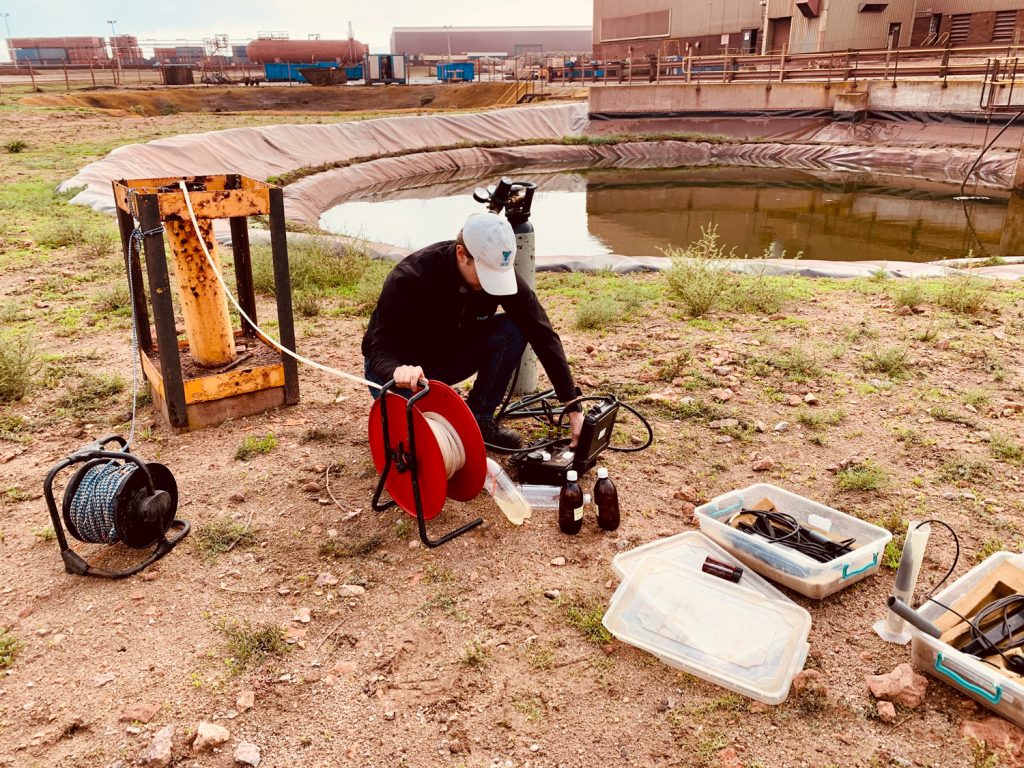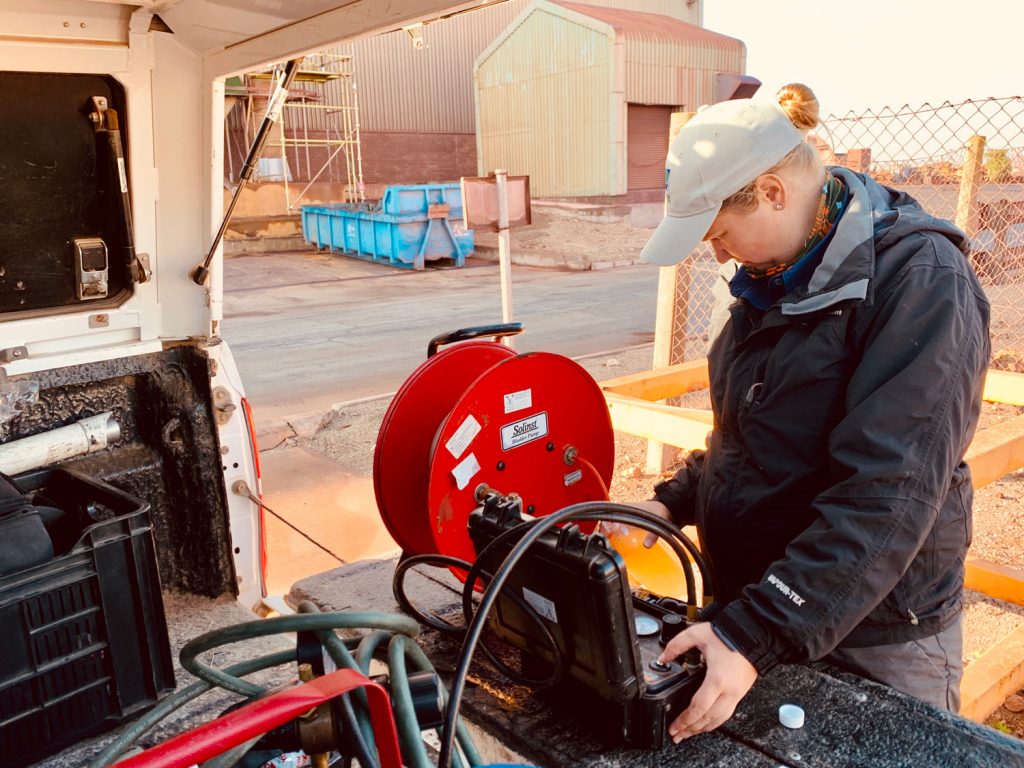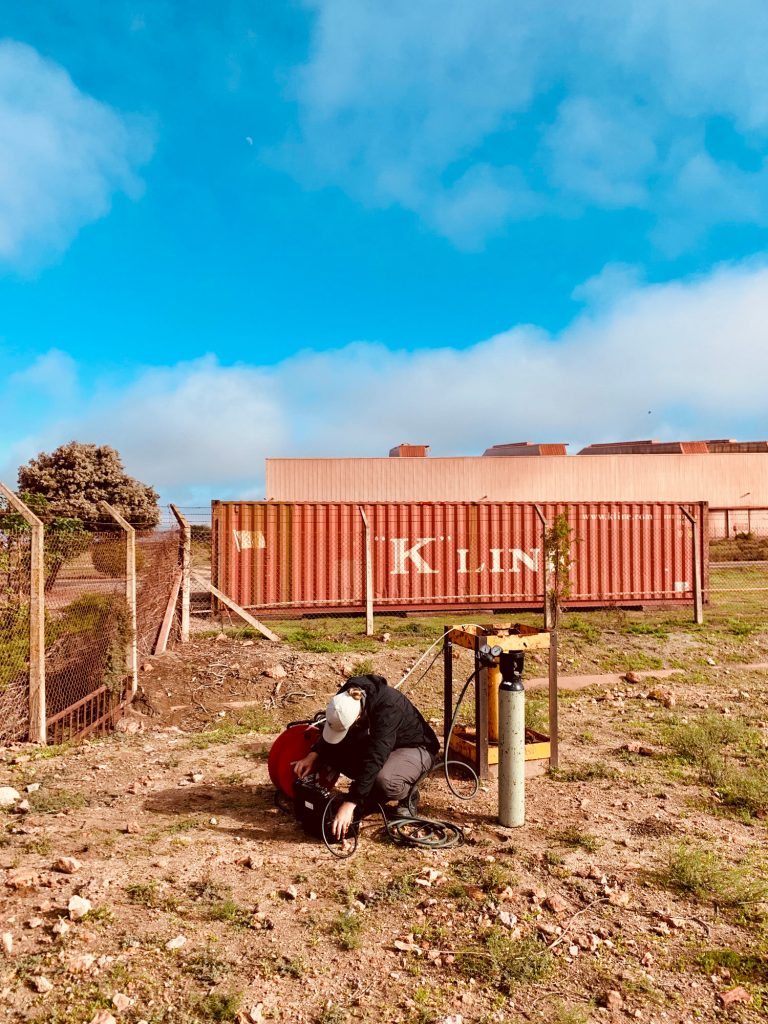Saldanha in the Western Cape of South Africa is a small port town on the northern shore of Saldanha Bay. The bay is a naturally sheltered harbour, making it ideal for exporting iron ore on massive ships. It serves the region’s base metal mines and a heavy minerals smelter, and is also the location of a large crude oil storage facility.
In addition, the town is home to over 20,000 residents who follow their trade based on the economic drivers in the area, including shipping companies, industrial production plants and the railway line. As such, it is important that the water resources in the area, including groundwater, be monitored and protected from contamination.
Sampling for Volatile Organic Compounds
Groundwater consulting company GEOSS, has taken the lead in an ongoing project to monitor the potential impacts of the aboveground activities on the region’s groundwater resources.

GEOSS needed equipment that could handle sampling for potential VOCs (volatile organic compounds) VPHs (volatile petroleum hydrocarbons) and general chemistry at potentially contaminated locations. They also required a sampling solution that could be used in narrow diameter boreholes.
Solinst Bladder Pumps
Based on their criteria, GEOSS selected a Solinst 1″ diameter Model 407 Bladder Pump. Solinst Bladder Pumps allow low flow purging and sampling – ideal when monitoring for VOCs.
Low flow sampling involves extracting groundwater at rates comparable to ambient groundwater flow so that the drawdown of the water level is minimized, and the mixing of stagnant water with water from the screened intake area in a well is reduced, overall, providing a representative sample.
Check out our video to see how the Solinst Bladder Pump operates to provide representative groundwater samples:
When a Bladder Pump is installed down a well (or borehole), water rises inside the bladder and sample tubing to static level. Compressed gas is applied to the pump via the drive tubing using a Control Unit. Pressure causes the bladder to compress and closes the bottom check valve, forcing water from the bladder into the sample tubing.
Pressure is released from the Bladder Pump during a vent cycle. The bladder opens as water refills the pump, while the top check valve prevents sample water from falling back into the bladder. Cycling the drive and vent provides water flow.
With Solinst Bladder Pumps there is the assurance that there is no air/water contact during sampling, meeting the most rigorous standards for VOC groundwater monitoring.

407 Bladder Pumps provide consistent, accurate, reliable groundwater samples in all applications. Ensuring no air/water contact during operation, pumps are ideal for VOC sampling. PTFE bladders are ideal for dedication. Inexpensive polyethylene bladders are also available. Stainless steel pumps in 1.66” and 1” diameters are effective at any angle, to depths of 500 ft (150 m), and are ideal for low flow sampling.
Get a Quote!
Portable Groundwater Sampler
Currently, GEOSS use a 1″ diameter Solinst Bladder Pump that they transport from site to site to sample groundwater. Between each sampling event, the Bladder Pump is decontaminated to prevent cross-contamination between wells. There are often over 30 samples to be collected each week, so efficient and proper decontamination is a crucial element to all sampling campaigns.
They are using a portable setup that includes the Solinst Model 464 Electronic Pump Control Unit to regulate the vent/drive cycles, and a nitrogen cylinder for the gas source.

A Solinst Model 122 Interface Meter is also used in the project to measure water level and to detect any free phase in the groundwater.
Michael Holloway, of GEOSS, said, “The equipment is used for the sampling and low flow purging of narrow diameter sampling boreholes. As hydrogeologists, we purge the borehole first before collecting a representative sample of the groundwater and not particularly water that has been standing stagnant inside the borehole.”
The purpose of the groundwater-sampling program is to detect any contamination in the region’s aquifers, as well as to track the movement and spatial distribution of any contaminant plumes that are found.

Michael noted, “The Bladder Pump is versatile and can be used across a few sites within the project where a vehicle can’t get to…it’s easy enough to carry the entire Bladder Pump setup and then continue the fieldwork without wasting too much time.”
Overall, Michael also mentioned the following advantages to using a Solinst Bladder Pump:
- Cost savings with one portable pump for multiple wells
- Narrow diameter pump can fit most wells
- Setup is easily transported between sampling sites
- Gas source is portable, so they can use smaller nitrogen cylinders
- Equipment efficiently purges and samples boreholes using low flow method
To learn how the Solinst Bladder Pump may be advantageous to your next groundwater-sampling project, contact our technical sales team to discuss your application.

Solinst thanks Michael Holloway, head of the GEOSS Monitoring Business Unit, for providing the details of this project.
